Indonesian haze: no oil palms on peat! Revoke PT PEAK’s license NOW
 Smoldering peatland in Katingan, Central Kalimantan (© Reza Lubis / Wetlands International Indonesia)
Smoldering peatland in Katingan, Central Kalimantan (© Reza Lubis / Wetlands International Indonesia)
Fires continue to ravage Indonesia’s peatlands, yet the government is permitting PT PEAK, a palm oil company, to destroy a valuable peat dome currently under restoration. Tell the Indonesian government to revoke PT PEAK’s license and ensure that this won’t happen again!
Call to actionTo: President RI Joko Widodo, Minister for Environment and Forestry Siti Nurbaya Bakar
“Review the licensing process for oil palm plantations and revoke the license of PT PEAK”
Fires have erupted in the palm oil concession of PT Persada Era Agro Kencana (PT PEAK) in Katingan, Central Kalimantan, igniting more than 50 hectares of carbon-rich peat. PT PEAK has only one small pump to extinguish the fire. “A formality”, concludes Reza Lubis, an ecologist with Wetlands International, while scanning the burning area and adding, “[PT PEAK] blame of course the community in the area, and the community is angry about that.”
Emissions from drained peatlands account for over 50% of Indonesia’s national greenhouse gas emissions. Yet instead of preventing forest fires and haze and living up to its commitments to reduce emissions, the government continues to license disastrous development projects on peatlands.
President Joko Widodo visited burning Kalimantan and witnessed the haze. In mid-October, the pollution standard index climbed up to over 3,000 micrograms per cubic meter air, 10 times the danger level. Burning peat is the source of most of this particulate matter.
Peatlands are protected under a moratorium in Indonesia since 2011. So how could PT PEAK obtain a license to develop this land in 2013? Who changed the moratorium map that is supposed to protect this peatland? This particular area is part of one of the last and largest remaining forested peat domes in western Indonesia. The forest is highly biodiverse and an orangutan habitat. It stores huge amounts of carbon and provides valuable services for climate change mitigation and water storage while supporting the livelihoods of local communities.
Urge the Indonesian government to review the licensing process that led to this environmental, climatic and socio-economic disaster.
Call on the Minister of Environment and Forestry of Indonesia to revoke PT PEAK's license immediately.
BackgroundPeat fires and haze in 2015
Indonesia has suffered from annually recurring peat fires in recent years. The blazes are the source of haze that is impacting the health of millions of people, damaging remaining forests and placing a huge burden on the economies of affected countries. This year’s peat fires again illustrate the magnitude of the problem as they blanket extensive areas of western and eastern Indonesia, Malaysia, Singapore and even the Philippines and Thailand in choking haze. The biggest cost is to the livelihoods and health of local people who are exposed to pollution that exceeds the danger threshold by more than a factor of ten. See the Al Jazeera video covering the fires close to the PT PEAK palm oil concession in Katingan.
Peat forests, peat swamps
Peatlands are wetlands with a water-logged organic soil (peat). Peat consists of 90% water and 10% dead plant material (carbon) that has accumulated over thousands of years. Peatlands are found all over the world and have a great diversity in vegetation and characteristics, some dominated by mosses or sedges and others (such as in Indonesia) covered with lush rainforest.
Indonesia has the third largest peatland area in the world, mostly in the coastal lowland regions of Sumatra, Borneo, Sulawesi and Papua. However, peat areas are being rapidly lost and degraded due to conversion to agriculture, especially the expansion of oil palm and pulp wood plantations. Tropical peatlands host unique biodiversity and critically endangered species such as the orangutan, tapir and Sumatran tiger. They are valuable ecosystems, as they store large quantities of carbon and play an important role in water retention – preventing floods, droughts and fires. In addition, they are an important source of fish, non-timber forest products and other goods and services that support local livelihoods and the economy at large.
Emissions from deforestation and forest fires
The conversion of peat swamp forest to oil palm and pulp wood plantations involves deforestation and drainage of peat soils which makes the landscapes dry and very prone to fires. When peatlands are drained, the peat is broken down, releasing huge amounts of carbon dioxide (CO2), a greenhouse gas that contributes to climate change. Such emissions occur according to a study at an annual rate of around 15 t of carbon per ha and continue until the peat is exhausted.
Therefore, drained peat areas are considered hotspots of CO2 emissions. In Indonesia, peatlands make up only 6% of the agricultural land, but they are responsible for over 50% of the total GHG emissions of Indonesia, not taking into account the huge amounts of additional emissions from peat fires.
Peatland subsidence
This carbon loss reduces the peat volume and thus causes the peat soil to subside at a rate of between 3 and 6 cm/year. This process continues as long as drainage is continued and until the soil surface reaches sea or river levels, constraining the outflow of water and thus leading to flooding and loss of land productivity.
If business as usual is continued, peatland subsidence will affect thousands of kilometers of coastline or millions of hectares of lowlands on the islands of Sumatra and Borneo. Ultimately, this will lead to a socio-economic disaster, threatening livelihoods of people and putting companies out of business.
Indonesian climate policies
The Government of Indonesia has pledged in the United Nations Framework Convention on Climate Change (UNFCCC) its “commitment to reduce its emissions by 26% and with external assistance up to 41%” by 2020. Their most recent pledge mentions an emission reduction of 29% by 2030.
To address peat issues, the government of Indonesia last year adopted a new regulation on the Protection and Management of Peat Ecosystems (PP 71/2014) aiming to “preserve the functions of peat ecosystems and prevent damage”. Since 2011 a moratorium has been in place forbidding the issuing of new licenses for developments on peat. This moratorium was recently extended (Presidential Instruction No 8/2015).
Sustainable peatland management
Peatlands can be sustainably managed and used without affecting their ecosystem services. In the area next to PT PEAK’s palm oil plantation concession, on the same Katingan peat dome, the peat swamp forest is being protected and restored in the Katingan Ecosystem Restoration Concession. The restoration management maintains the biodiversity, restores the natural resource base, buffers against fires and protects the carbon from oxidation, thus preventing significant amounts of CO2 emissions. As can be seen on the map, fires in the newly developed neighboring PT PEAK concession are now threatening the peat forests in the Ecosystem Restoration Concession.
Local communities can benefit from peatlands by deploying sustainable peatland management practices. This includes paludiculture, which is the cultivation of commercially attractive native peat swamp species on rewetted peatland. Examples include sagu (a starch producing palm) used for food production, tengkawang (illipe nut, a series of valuable hardwood species that also produce oil-rich fruits) used for the production of vegetable oils, jelutung (Asian rubber) used for latex production and other species used for timber and rattan production.
Paludiculture is the only sustainable land-use option in peatlands, apart from conservation, that will provide an income for local communities for the long term. As it can help to restore and maintain the degraded functions of previously drained peatlands it can help to prevent fires and stop the soil from subsiding to levels at which flooding will become unavoidable, thus supporting sustainable livelihoods for local communities.
To: President RI Joko Widodo, Minister for Environment and Forestry Siti Nurbaya Bakar
Mr. President, Mrs. Bakar,
The Indonesian government has recently provided a license to PT Persada Era Agro Kencana (PT PEAK) to establish a new oil palm plantation in the Katingan region of Central Kalimantan. The concession is located on peatland, which is in flagrant violation of the Indonesian moratorium forbidding the issuing of new licenses for developments on peat (Presidential Instruction No. 8/2015) and it contradicts various aims of the recently adopted Indonesian framework of peatland management related policies, including PP71/2014.
Although the licensed area (covering 12,906 ha) is clearly located on peat, it appears that in the moratorium map revision process the area was changed from peatland to non-peatland area. This raises serious questions about how this is possible and who is responsible.
Moreover, the concession is located adjacent to the Katingan Ecosystem Restoration Concession (ERC), managed by PT Rimba Makmur, and the drainage of the oil palm concessions will impact directly on this ERC. How is it possible that this has not come up as an issue in the environmental impact assessment (AMDAL) that needs to be done before and as part of the licensing procedures? Who is responsible for this faulty process?
It seems that it is easy for a company like PT PEAK, or perhaps any other company, to get around such policy and legislative hurdles. Is this evidence of a particular capacity of PT PEAK to circumvent legal frameworks, or the inability of the Indonesian government to implement its policies and legislation? Or does it show a lack of commitment to upholding the law and implementing these important policies? The fact that all this is happening in Indonesia’s REDD+ demonstration province of Central Kalimantan is particularly appalling.
Development of peat swamp forests and the drainage of peatlands contributes 40-50% of Indonesia’s national greenhouse gas emissions. In the UNFCCC, the government of Indonesia pledged ‘its commitment to reduce its emissions by 26% and with external assistance up to 41%’ to the international community.
How seriously committed is the Indonesian government if it continues with business as usual and continues licensing such disastrous developments on peatlands? It should be noted that the oil palm concession, once it is deforested and drained, will be very prone to fires, contributing to haze events and putting the health and viability of local communities at serious risk, as well as posing a major risk to the ERC.
Surveys carried out in the area by Wetlands International found that fires are rampant on the PT PEAK concession, showing the company's inadequate capacity to manage the area. Fires have already spread to surrounding areas, including the ERC. PT PEAK has openly accused local communities of starting the fires, clearly showing but also provoking conflict.
It should also be noted that even under best management practice, drained peatland will subside as a result of the loss of water (drainage) and carbon (through carbon dioxide emissions resulting from the drainage) at a rate of 3-6 cm per year until it reaches the drainage limit. By then, the area will be subject to regular and prolonged flooding, turning it into a waste land. While the company may reap major profits in the coming decades from the development, future generations will be left with unproductive land: So much for poverty reduction. At any rate, it is very much the question whether local communities have been given the option of Free and Prior Informed Consent (FPIC), which is nowadays required for any socially sound development.
It is therefore highly fitting that the Indonesian government has developed all the peatland-related policies. However, why are they not implemented? How is it possible that PT PEAK can get a license to develop this peatland area? This particular peatland area is part of one of the last and largest remaining forested peat domes in western Indonesia and is extremely important for biodiversity. It holds huge amounts of carbon and provides valuable services for climate change mitigation, water storage and the livelihoods of local communities.
We therefore urge the Indonesian government to review the licensing process that resulted in the authorization of this environmental, climatic and socio-economic disaster that runs counter to all of Indonesia’s key national and international commitments under the UN Climate Convention and the UN Convention on Biological Diversity (CBD) and its own legislation.
We call on the Minister of Environment and Forestry of Indonesia to immediately revoke the license given to PT Persada Era Agro Kencana.
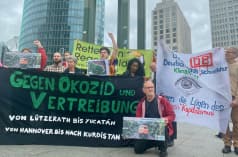




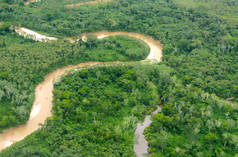
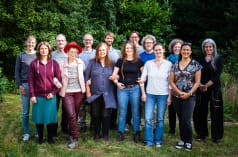
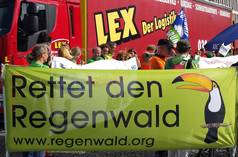



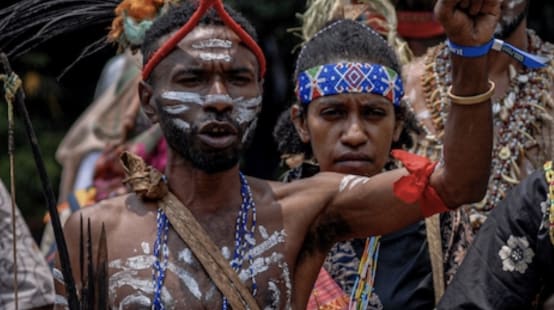
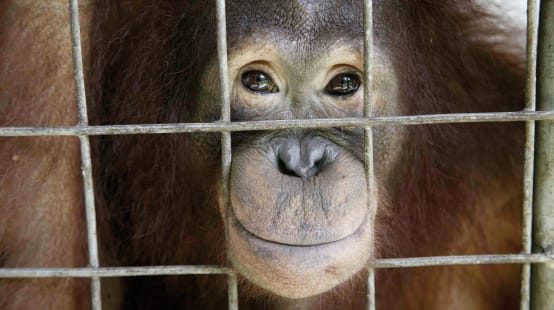
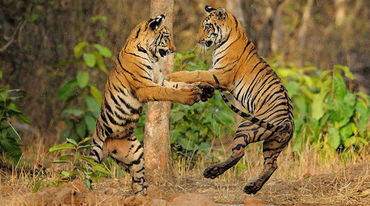 Recent successes
Recent successes